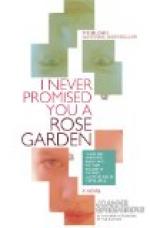Will you do me one more favour before even the suspicion of frost touches my enthusiasm, that I may have everything in order in my Garden Boke against a planting season when Time may again hold his remorseless sway. This list of eighteen or more shrubs is made from those I know and like, with selections from that Aunt Lavinia sent me. Is it comprehensive, think you? Of course we cannot go into novelties in this direction, any more than we may with the roses.
There is the little pale pink, Daphne Mezereum, that flowers before its leaves come in April. I saw it at Aunt Lavinia’s and Mrs. Marchant had a great circle of the bushes. Then Forsythias, with yellow flowers, the red and pink varieties of Japanese quince, double-flowering almond and plum, the white spireas (they all have strange new names in the catalogue), the earliest being what mother used to call bridal-wreath (prunifolia), with its long wands covered with double flowers, like tiny white daisies, the St. Peter’s wreath (Van Houttei) with the clustered flowers like small white wild roses, two pink species, Billardii and Anthony Waterer, beautiful if gathered before the flowers open, as the colour fades quickly, and a little dwarf bush, Fortune’s white spirea, that I have seen at the florist’s. Next the old-fashioned purple lilac, that seems to hold its own against all newcomers for garden use, the white tree lilac, the fragrant white mock orange or syringa (Coronarius), the Japanese barberry of yellow flowers and coral berries, the three deutzias, two being the tall crenata and scabra and the third the charming low-growing gracilis, the old-fashioned snowball or Guelder rose (viburnum opulus sterilis), the weigelias, rose-pink and white, the white summer-flowering hydrangea (paniculata grandiflora), and the brown-flowered, sweet-scented strawberry shrub (calycanthus floridus).
“Truly a small slice from the loaf the catalogues offer,” you say. Yes; but you must remember that our wild nursery has a long chain to add to these.
In looking over the list of shrubs, it seems to me that the majority of them, like the early wild flowers, are white, but then it is almost as impossible to have too many white flowers as too many green leaves.
September 15. I was prevented from finishing this until to-day, when I have a new domestic event to relate. Maria, no longer a music mistress, has leased the Opal Farm, it seems, and will remain with me this winter pending the repairing of the house, which Amos Opie himself is to superintend. I wish I could fathom the ins and outs of the matter, which are not at present clear, but probably I shall know in time. Meanwhile, I have Maria for a winter companion, and a mystery to solve and puzzle about; is not this truly feminine bliss?
XVII
THE INS AND OUTS OF THE MATTER




